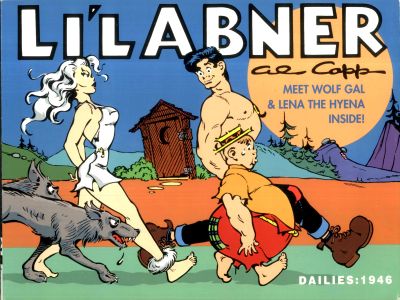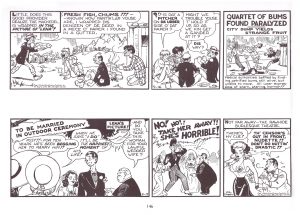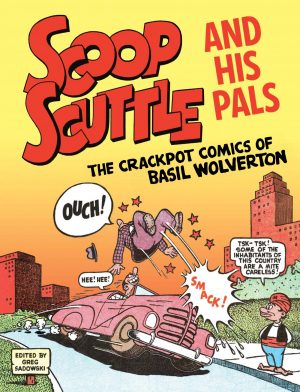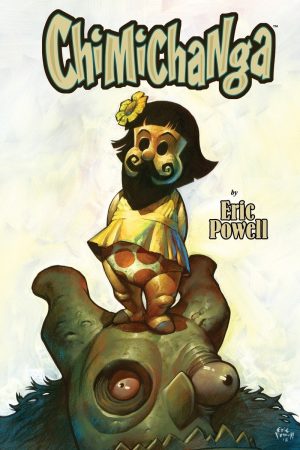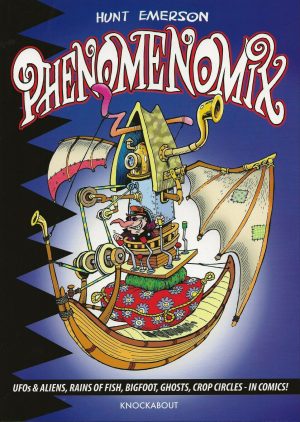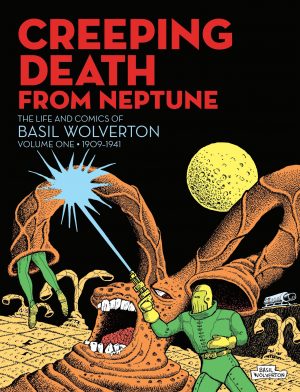Review by Frank Plowright
As Al Capp had ignored World War II in Li’l Abner, it differed from other contemporary strips in not having the feelgood bounce of the war’s ending, but by 1946 Capp had such a selection of hillbilly eccentrics to run through his strip that it barely mattered. The cover highlights the introduction of two more, although 21st century readers might find aspects of both sequences distasteful, if not outright offensive, which docks a star.
Due to editor Rick Marschall’s sympathetic breakdown, Li’l Abner collections present roughly a year’s chronology, but never just starting on January 1st and ending on December 31st. The 1945 volume closed off mid-November, while this selection doesn’t reach December either. The Wolf Girl makes her appearance early, Capp falling back on his familiar deception of building a character up as fearsome for several days before their introduction. The Wolf Girl is actually a lonely, isolated woman, in some ways to be pitied, who wants to know what love is. Capp runs the full gamut of smutty dialogue and illustrative sexual symbolism as she observes the visitors to Kissin’ Rock before setting her sights on Abner.
Lena the Hyena finally appears toward the end of the year, Capp savvy enough to spin out the suspense of creating the world’s most horrible-looking woman for over six months, sending cartoonist Lester Gooch to Lower Slobbovia to find her, then Abner to find him. Capp also generated a nationwide competition resulting in publicity extending to three pages in Life magazine. Lena’s appearances are “censored” as too horrific until the winning grotesque design is unveiled, submitted by Basil Wolverton, kickstarting his career, while examples of his subsequent work are included in the introduction (and see recommendations). The hysteria over Lena even forces its way into the annual Sadie Hawkins Day sequence.
Beyond the introductions Capp continues to exploit the poverty-driven ignorance of the Dogpatch residents. They presume a millionaire is moving into the old hunting lodge when they see both a tablecloth and a bedsheet being unloaded from the removal van, and when a sack of gold hits the land it’s cordoned off as a hallucination. Abner is sent on a mission to gather 6000 Ham Sangwidges, there’s another feud, and Abner is almost married off again. The audience wouldn’t have it any other way.
Frantic, farcical and frenetic, overlook the items of their era and Capp’s sense of the ludicrous still greatly appeals.
